#babak tafreshi
Text

TODAY'S FROZEN MOMENT - 10th Anniversary of this amazing shot... March 27th, 2014 -
As dawn broke over the Paranal Observatory in Chile, visiting photographer, Iranian Babak Tafreshi, photographed the Milky Way - or at least the center of it - as it passed directly overhead....this fisheye shot truly producing a moment of awe... Tafreshi is the founder and director of The World at Night, a group of photographers who work to share the beauty of the night sky... a star chaser and immensely talented shooter... his work is life-affirming and stunning… and great for the soul...
(Mary Elaine LeBey)
+
We are travelers on a cosmic journey, stardust, swirling and dancing in the eddies and whirlpools of infinity. Life is eternal. We have stopped for a moment to encounter each other, to meet, to love, to share. This is a precious moment. It is a little parenthesis in eternity.
“The Alchemist” by Paulo Coelho
[alive on all channels]
#space#the Milky Way#Babak Tafreshi#photography#Mary Elaine LeBey#alive on all channels#The alchemist#Paulo Coelho
23 notes
·
View notes
Photo
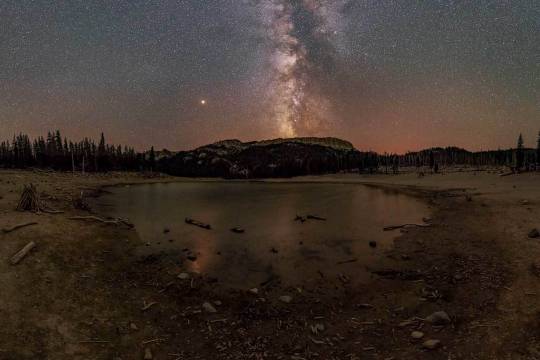
The Milky Way shimmers above a partially drained Horseshoe Lake, in Mammoth Lakes, California.
PHOTOGRAPH BY BABAK TAFRESHI, NAT GEO IMAGE COLLECTION
#babak tafreshi#photographer#national geographic#landscape#milky way#night sky#horseshoe lake#mammoth lakes#california#nature
28 notes
·
View notes
Text
The full moon rose above a little island called the Egg Rock, the north shore of Boston. The elegant music of this video by @barbadbayat is a part of unreleased piece made for our growing project Celestial Orchestra. Watch this in 4k quality on my YouTube Channel “Babak Tafreshi”.
via Instagram @babaktfreshi
2 notes
·
View notes
Text
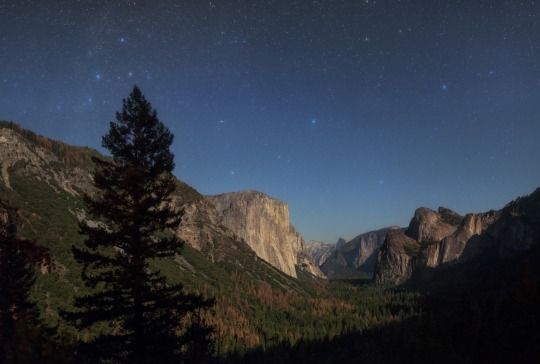
The Andromeda constellation, also known as the Chained Maiden, is seen over the El Capitan vertical rock formation in Yosemite National Park in California. To the surprise of many people, it can be spotted with the naked eye on a clear night from August through February. Photograph By Babak Tafreshi, National Geographic Image Collection
5 Famous Constellations That (Almost) Anyone Can Find
From Andromeda to Ursa Major, these cosmic landmarks dominate the sky. Learning how to spot them will turn you into a star gazer.
— By National Geographic Staff | August 23, 2023
The night sky is so vast; where do you start? Finding your way through the sky begins with a few dominant constellations, containing everything from star clusters and nebulae to obscure galaxies. If you keep looking upward, you’ll see these five constellations parade throughout the sky and through the seasons.
1). Andromeda (The Chained Maiden)
Andromeda, the Chained Maiden constellation, can be seen from August through February. This large constellation in the northern sky is conspicuous thanks to its attachment to the neighboring constellation Pegasus and that constellation’s Great Square asterism. The brightest star, Alpheratz, which represents the head of the maiden, happens to be shared with Pegasus. This blue giant star lies 97 light-years from Earth and shines 200 times brighter than our sun. Four main stars of Andromeda form a curved line toward the east, with Mirach representing her hips and Almach her chained foot. Although Mirach is nearly identical in brightness to Alpheratz, it is a larger red giant 197 light-years away.
Although Andromeda is considered a northern constellation, most of its stars can be glimpsed from the Southern Hemisphere, but always near the horizon, making it a bit trickier to observe its famous deep-sky objects. The most celebrated of these is the grand spiral called the Andromeda galaxy, or Messier 31. This, the closest large galaxy to our Milky Way, lies 2.5 million light- years away. To the surprise of many people, it can be spotted with the naked eye from a typical suburban backyard on a clear autumn night. It represents one of the farthest objects the unaided human eye can see in the universe.
2). Canis Major (The Great Dog)

To locate Canis Major, also known as the Great Dog, look for the brightest star in the sky, Sirius, which is seen here above Alqueva Dark Sky Reserve in Portugal. Sirius is actually Canis Major’s sparkling eye. Photograph By Babak Tafreshi, National Geographic Image Collection
Canis Major is the larger of the two faithful hunting dog companions to Orion, the Hunter (explained below.) Standing by the Hunter’s foot, the Great Dog is an easy-to-find constellation visible from most areas of the world, thanks to being positioned just south of the celestial equator. Canis Major’s sparkling eye is the brightest star in the sky: Sirius.
The dog days of summer were named specifically for the Dog Star. In the Northern Hemisphere, ancient sky-watchers noticed the intensely bright star would rise and set with the sun. The combined power of the two suns was thought to be the cause of the stretch of hot weather experienced in late summer.
For binoculars and telescopes, Canis Major is rich in star clusters. Leading the pack is the beautiful open cluster M41, also known as the Little Beehive, which lies only four degrees south of Sirius. Containing some 80 stars, this fourth-magnitude cluster is 2,300 light-years away, yet is visible as a hazy patch to the naked eye on a dark night. It is an impressive sight through a backyard telescope, with orange stars scattered within.
3). Orion (The Hunter)
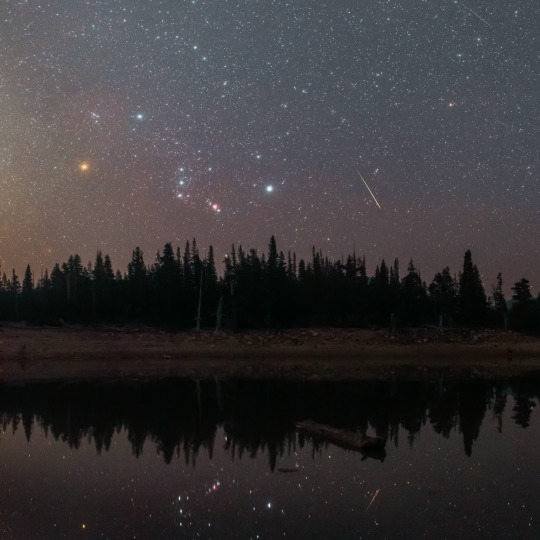
Orion, the Hunter, is seen just above the tree line by Mammoth Lakes in California. One of the oldest constellation figures, many stories are attached to Orion, a great hunter in Greco-Roman myths. Photograph By Babak Tafreshi, National Geographic Image Collection
Visible across the world, Orion is one of the most identifiable as well as one of the oldest constellation figures, crossing cultures and thousands of years. Orion straddles the celestial equator, so it is well known to observers in both the Northern and Southern Hemispheres and holds the record for containing the most bright stars in one stellar pattern.
Many stories are attached to Orion, a great hunter in Greco-Roman myths. The most famous says that he was stung by a scorpion (Scorpius) in an epic battle, which is why the two figures have been placed in opposite parts of the sky. Orion boasts two first-magnitude stars, with Betelgeuse marking the shoulder to the viewer’s left and Rigel his foot on the right. Sitting between Rigel and Betelgeuse is Orion’s stellar line of three stars, Alnitak, Alnilam, and Mintaka, marking the Hunter’s belt.
Orion includes an area of the Milky Way that features intense star production. Beneath the Hunter’s belt, in the middle of three stars that form Orion’s sword, is the Orion Nebula (M42). Visible to the naked eye as a fuzzy, faint patch, in backyard telescopes delicate wreathlike structures show where star formation is taking place at a furious pace.
4). Crux (The Southern Cross)

Crux, also known as the Southern Cross, can be found just above the silhouette of an acacia tree in Amboseli National Park in Kenya. Its distinctive cross asterism is marked simply by four bright stars. Photograph By Babak Tafreshi, National Geographic Image Collection
One of the most famous of all southern constellations, Crux is the smallest constellation in the sky, yet it is among the most recognizable. Its distinctive cross asterism is marked simply by four bright stars. In ancient times before Earth’s precession shifted the stars toward the south, the stars of Crux were visible from Europe. But it wasn’t until the 17th century, when European navigators sailing south recognized the cross-like pattern, that Crux became its own official constellation. While best explored from south of the Equator, keen-eyed sky-watchers as far north as the southern tip of Florida can glimpse the Southern Cross.
Crux straddles a rich section of the southern Milky Way band and so is filled with deep-sky treasures of all kinds. Just east of Crux lies what appears to be a hole in the sky—a dark region devoid of stars known as the Coalsack Nebula. It is clearly visible to the naked eye as a strikingly large, dark gas cloud silhouetted against a bright star-studded Milky Way.
5). Ursa Major (The Great Bear)
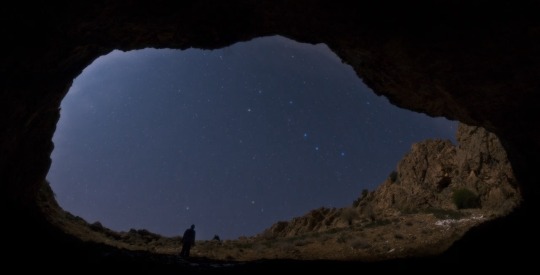
Ursula Major, which includes the Big Dipper, is seen framed by the top of the entrance to Roodafshan Cave in Iran. Also known as the Great Bear, the Big Dipper in this constellation represents the bear’s rear torso and tail, with the other stars of the constellation mapping out its long nose and legs. Photograph By Babak Tafreshi, National Geographic Image Collection
Ursa Major, also known as the Great Bear, is one of the most prominent northern constellations, and its main claim to fame is that it contains the Big Dipper, a highly recognizable asterism. The easily identifiable Big Dipper represents the bear’s rear torso and tail, with the other stars of the constellation mapping out its long nose and legs. For most observers in the Northern Hemisphere, the Great Bear is close enough to the north celestial pole that it never sets below the horizon, and it rotates around the North Star once a day.
While to the ancient Greeks this stellar group represented a large bear, other cultures saw everything from a chariot to a horse and wagon, a team of oxen, and a hippopotamus (by Egyptians, who had likely never seen a bear). Some Native American tribes believe the cup of the dipper represents a bear and the stars in the handle represent warriors who pursue it.
Finally, remember that you will get your best viewing on moonless nights away from brightly lit areas. Give your eyes time to adjust to the darkness—and good hunting!
#National Geographic#5 Famous Constellations 🌌#Andromeda (The Chained Maiden)#Canis Major (The Great Dog)#Orion (The Hunter)#Crux (The Southern Cross)#Ursa Major (The Great Bear)#Photographer | Babak Tafreshi
0 notes
Text

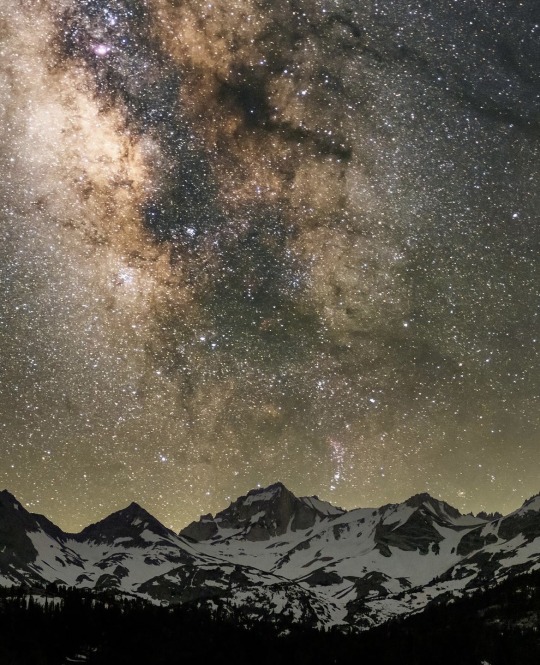
Milky Way over California by Babak Tafreshi
#astrophotography#milky way#stars#nature#astronomy#night sky#landscape#California#photographers on instagram#mine
2K notes
·
View notes
Photo

Brighter Than Mars
Credits: Babak Tafreshi, TWAN
44 notes
·
View notes
Text
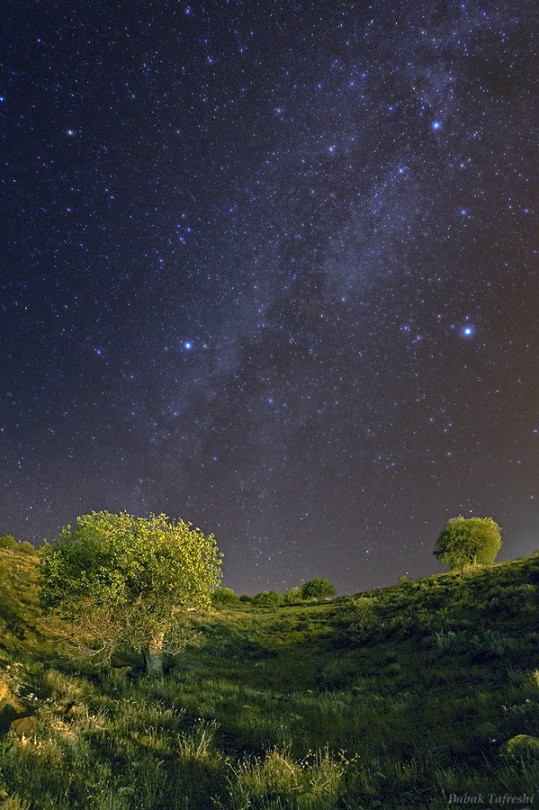
Summer Night in Astronomy Town
Credit & Copyright: Babak Tafreshi (TWAN)
Explanation: This serene view records a late summer night sky over the rolling, green hills of planet Earth. It was taken near the rural village of Saadat Shahr, Fars province, in southern Iran. Saadat Shahr is also known as Astronomy Town, as the inhabitants have demonstrated a remarkable passion for sky gazing. Fittingly, this Astronomy Town sky view finds a lovely part of the Milky Way near picture center. The three brightest stars are the stars of the Summer Triangle, Deneb in Cygnus (top), Altair in Aquila (left), and Vega in Lyra (right). The foreground landscape, illuminated by Astronomy Town lights, includes a kind of wild pistachio tree common in the region. To identify the stars and constellations, just slide your cursor over the image.
6 notes
·
View notes
Text
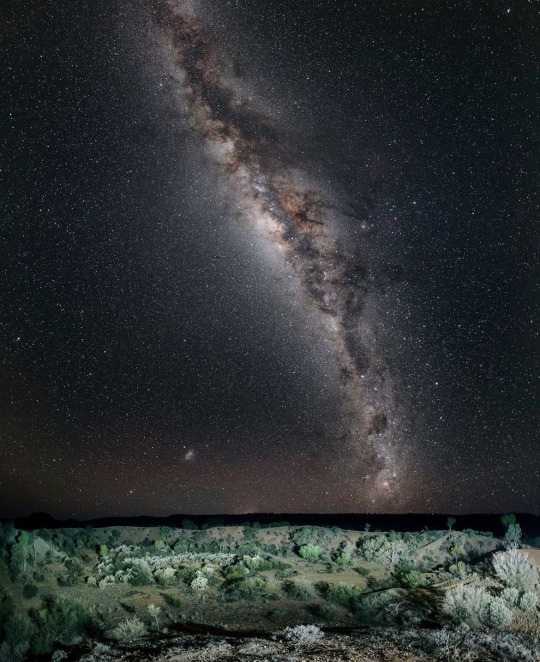
Milky Way over Australia by Babak Tafreshi
* * * *
Thank you Viktor Frankl.
He spoke of “a will to meaning in contrast to the pleasure principle (or as we could also term it, the will to pleasure) on which Freudian psychoanalysis is centered, as well as in contrast to the will to power.” Many were murdered outright, but in the harsh conditions of the camp those who lost their sense of purpose more readily died; those who had something to live for struggled and sometimes survived. Frankl concluded that it is “a dangerous misconception of mental hygiene to assume that what man needs in the first place is equlibrium or, as it is called in biology, ‘homeostasis,’ i.e., a tensionless state. What man actually needs is not a tensionless state but rather the striving and struggling for a worthwhile goal, a freely chosen task. What he needs is not the discharge of tension at any cost but the call of a potential meaning waiting to be fulfilled by him. . . . If architects want to strengthen a decrepit arch, they increase the load which is laid upon it, for thereby the parts are joined more firmly together.”
(Man’s Search For Meaning)
#Milky Way#Australia#sky#the heavens#heaven and earth#Man's Search for Meaning#Purpose#Viktor Frankl#quotes
9 notes
·
View notes
Photo
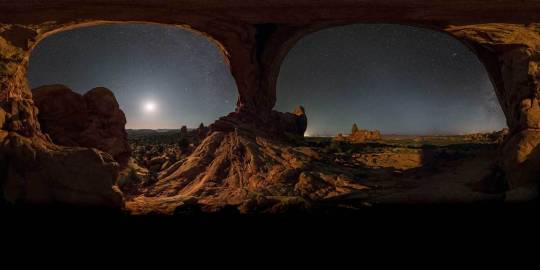
Arches National Park has the greatest concentration of natural formations in the United States. It’s just one of many exceptional sites administered by the National Park Service.
PHOTOGRAPH BY BABAK TAFRESHI, NAT GEO IMAGE LIBRARY
#babak tafreshi#photographer#national geographic#arches national park#arch#united states#national park service#nature#night sky#landscape#rock formations
27 notes
·
View notes
Text
The Earth's companion for more than 4 billion years, the moon plays an essential role in life on this planet. Without its tidal force, the evolution path of life may never be developed this way. Enjoy this minute with the crescent moon sets over various landscapes: a sea of clouds in the Canary Islands, the rugged peaks of Sierra in California, a town in Utah, and a very thin new moon above the shore of Boston. Music by @barbadbayat from our ongoing project Celestial Orchestra.
via Instagram @babaktafreshi
1 note
·
View note
Text
Northern & Southern Lights!

Aurora Borealis lights up the skies above Michigan’s Upper Peninsula on Lake Superior, United States 🇺🇸. Photograph By Nick Irwin

The comet NEOWISE shares the sky with colorful auroras over Little Sable Point Light in Mears, Michigan, United States 🇺🇸. Photograph By Nick Irwin

The Northern Lights stream down above Kirkjufell mountain in Iceland’s Snæfellsnes Peninsula, Iceland 🇮🇸. Photograph By Babak Tafreshi, National Geographic Image Collection

A Fjord reflects the glowing green light of an aurora near Tromsø, Norway 🇳🇴. Photograph By Babak Tafreshi, National Geographic Image

The Northern Lights swirl over a wooded area in Northern Sweden 🇸🇪. Photograph By Babak Tafreshi, National Geographic Image

The Southern Lights illuminate the sky in Tasmania, Australia 🇦🇺. Photograph By Yuichi Takadaka

The Aurora Borealis (Northern Lights) dance above reindeer in the snow-covered Abisko National Park, Sweden 🇸🇪. Taking the overnight train from Stockholm to Abisko is one of the best ways to see the night sky display in the country. Photograph By Babak Tafreshi, National Geographic Image
0 notes
Text



The mystifying solar eclipse of 2024
Babak Tafreshi on Instagram
#sun#moon#astrophotography#astronomy#photographers on instagram#curators on tumblr#mine#eclipse 2024#total solar eclipse#solar eclipse
1K notes
·
View notes
Text
Conversations with Babak Tafreshi: A National Geographic Explorer astrophotographer discusses shooting the solar eclipse (with tips!)
On April 8, over 32 million Americans will witness a total solar eclipse, the last until 2044. ABC News and National Geographic will host “Eclipse Across America,” broadcasting live from 2:00 p.m. EDT across multiple platforms, including ABC, National Geographic Channel, Disney+, and Hulu. Anchored by David Muir and Linsey Davis from Burlington, Vermont, the program features Nat Geo talents like…
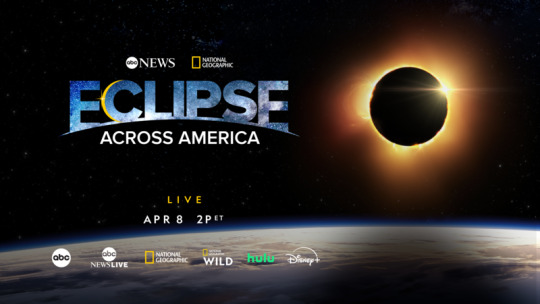
View On WordPress
#Africa#Asia#astronomy#Australia#Europe#Featured#North America#photography#solar eclipse#South America
1 note
·
View note


